I was looking for a vertical jigging rod for fishing for zander in deep water using heavy jigs. I had fished Rutland for the zander, so I had a good idea of the sort of rod I wanted. The rod needed to be lightweight, around 6 feet long, with a stiff tip and a short butt (for kayak fishing). I also wanted a 2 piece rod for ease of transport.
The Dragon Vertical jig 42 (27-02-198 S2-66112-MHXF) was introduced by Dragon in 2015, and whilst it was slightly long at 6 foot 6 inches, it ticked all of the other boxes in terms of criteria.
This is what the Dragon website says about the properties of the rod…
Components used in the VERTICAL series:
• graphite mats by Japanese company Toray with stiffness from 24 PSI to 62 million;
• Fuji Alconite guides;
• VSS and ECS type reel seats;
• first-class hard EVA foam;
• Gudebrod frappings;
• Trondak varnishes.
Basic features of the VERTICAL series:
• small diameter of the blank in relation to the power;
• low weight of the rod;
• Progressive blank deflection under load, ensuring reliable, comfortable haul and a high percentage of hauled fish;
• the ability to carry very heavy loads during hauling;
• high resistance to overload and mechanical damage.

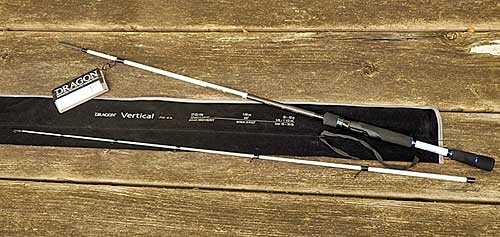

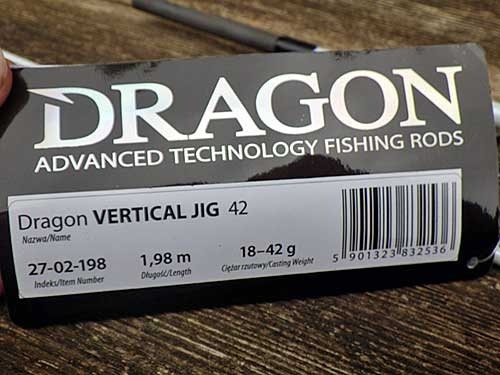
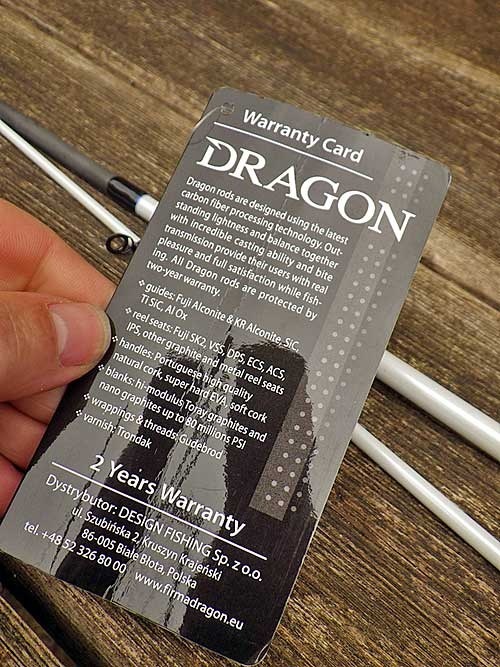
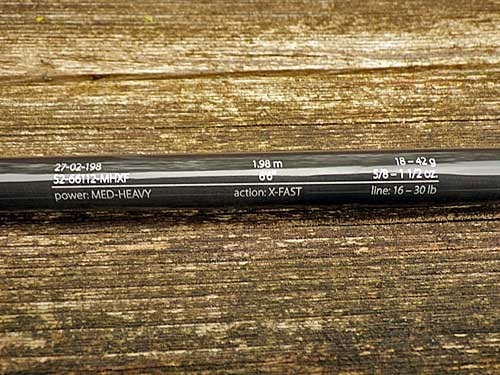
The first thing you notice are how light it is (I guess that is down to the materials used – carbon matt)…
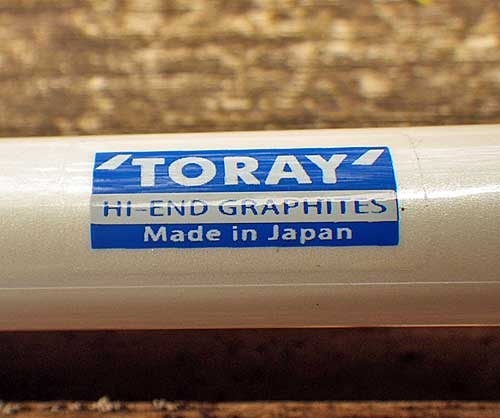
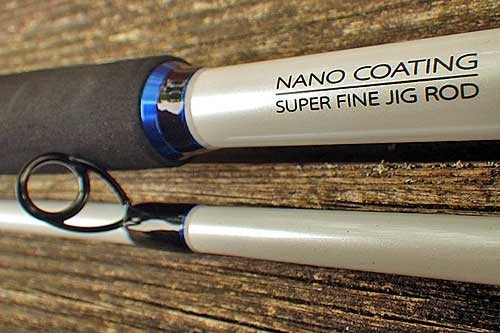
What also surprised me was the power/strength of the blank, considering how thin it is (A product of the nano fibres may be ?).
Anyhow, I digress. Let’s get back to the review, and check out…
There’s not much to say about the butt – the evo grip is good and does away with the need for a butt cap. The section from the butt to the bottom of the reel seat is short, which is great news if you are a kayak fisherman, as long butts just get in the way especially when you are jigging; the reel just keeps banging against your PFD.
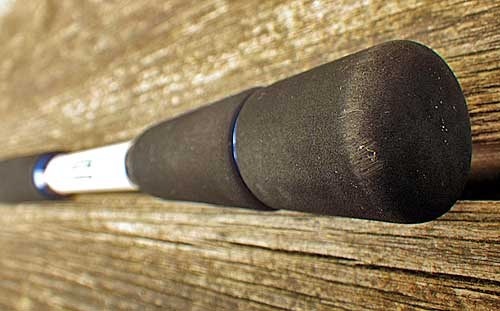
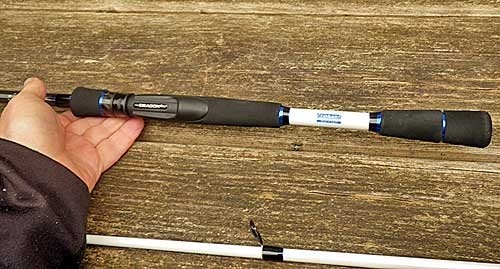
The reel seat is not a Fuji, but it looks perfectly good, and the screw winch mechanism is precise and secure. The graphics and carbon collar on the top of the reel seat are a nice touch, and not too flashy.
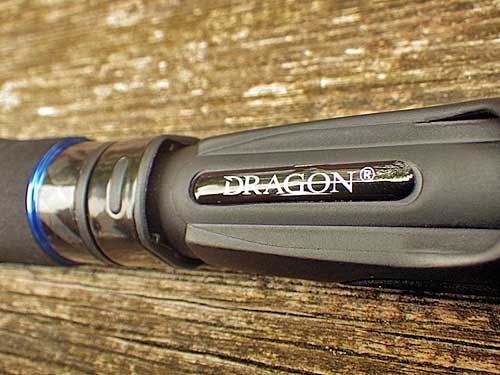

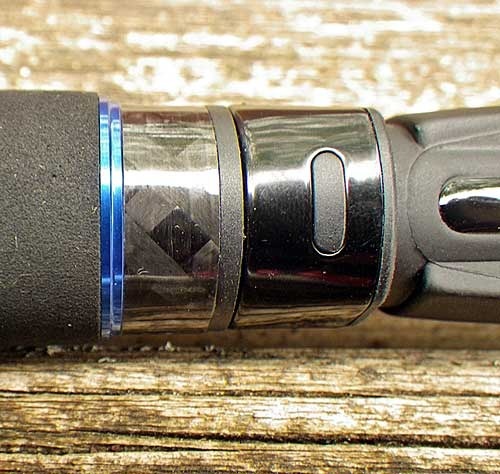
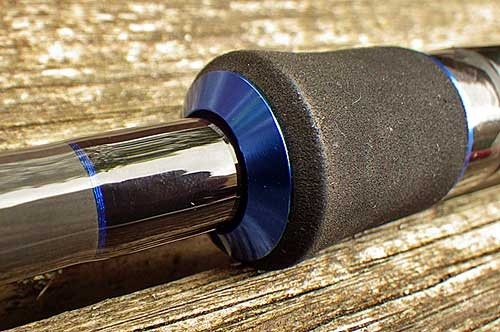
The varnishing and whipping thread used throughout the rod looks good, and is also thick enough to protect the guides from minor scratches and knocks.
The rod is fitted with double legged Fuji Alconite guides throughout its length…


The joint of the rod fitted well, and had plenty of room for wear…
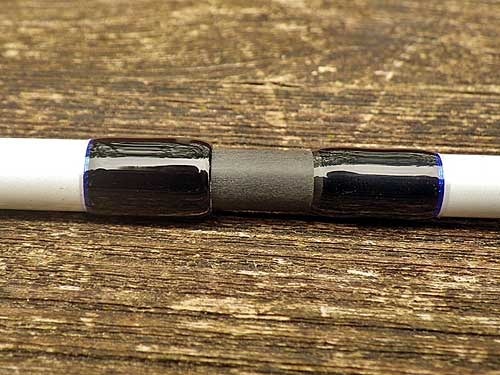

The guides on thee tip section were small and neat – a couple of the tip guides had a tad too much varnish, but that is a minor concern, and if anything, it protects the whippings…

The tip ring was small, but it looked tough; so often the tip rings can be fragile and the linings are prone to cracking…
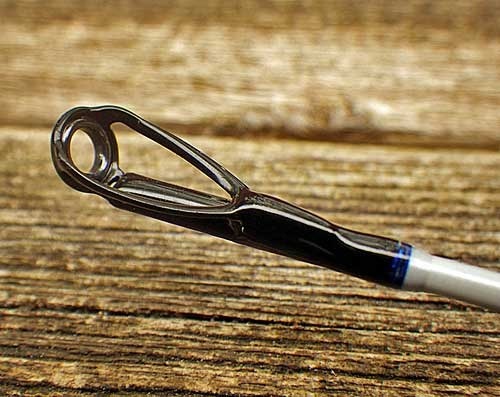
The lower part of the rod was incredibly stiff for such a thin diameter blank, the tip was quite fast, but firm enough to set a hook at depth and lift a heavy jig without the tip bounce which I have experienced with rods with softer tips. I really had to give the tip some serious stick to make it bend in the image below…
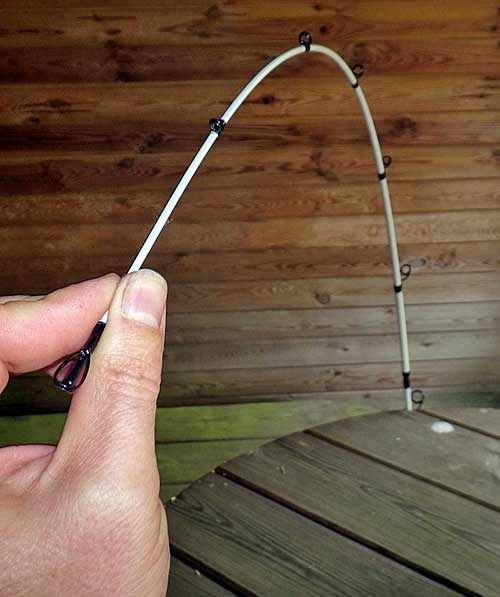
All in all, I was very impressed, it looked like the rod I was after. But as we all know, looks can be deceptive, and the only real way to find out if the rod performed as well as I hoped it would, was to give it a good try out. Luckily, the ideal opportunity presented itself in late June 2015, in the shape of the World Predator Classic competition in Holland. I had attended the first WPC competition in 2014, so I knew a little bit about what to expect. The Dutch venue was home to some big predators, and in particular some big zander in deep water, which would respond well to vertical jigging tactics.

On the first day of the competition, I was eager to try out my new Dragon Vertical jigging rod. I clipped on a green paddle tail lure on to the wire trace. The tip of the rod easy coped with the 40g jig head, there was no bounce, and I could feel every movement of the lure below. After a few minutes of jigging, I saw some activity on the fish finder. I homed in on the drop off, and saw what looked like a big fish return. I dropped the jig, and a split second after it hit the bottom I gave a couple of sharp vertical lifts on the rod. As I lifted the rod a third time, I had a quick jab of a bite which I hit, and straight away, I could feel a fish running. I applied a decent amount of pressure to the fish; the rod bent around into its test curve and absorbed the runs and dives of the fish, as the reel clutch fizzed. This was a decent fish, and I started to think maybe I had hooked a big pike, but as the fish came closer in the water, I could see it was a big zander. Easily a new personal best for me, much bigger than the zander I had caught last year, and some of them were decent.
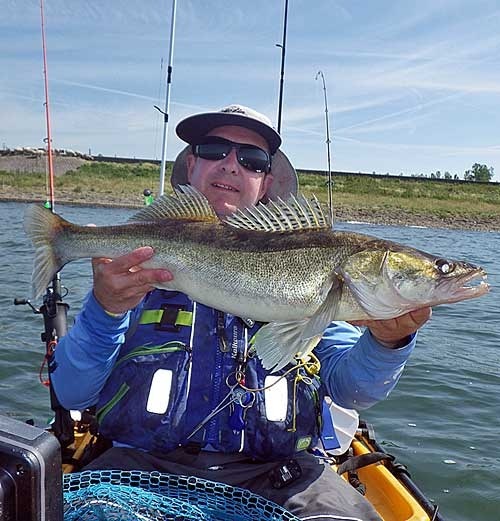
The zander fish measured 74cms; a great work out for the rod – and it confirmed what I already suspected, that this rod was perfect for vertical jigging in deeper water with heavier jigs (20-40g). I also reckon that the rod would be perfect for heavier pike work, particularly trolling big lures from the kayak.
In conclusion, the Dragon Vertical Jig 42 rod did everything I wanted it to do – it’s a light, powerful 2 piece rod with a short butt. Its reasonably priced, and comes with a 2 year warranty. If I could change anything, I would make it 6 inches shorter.
